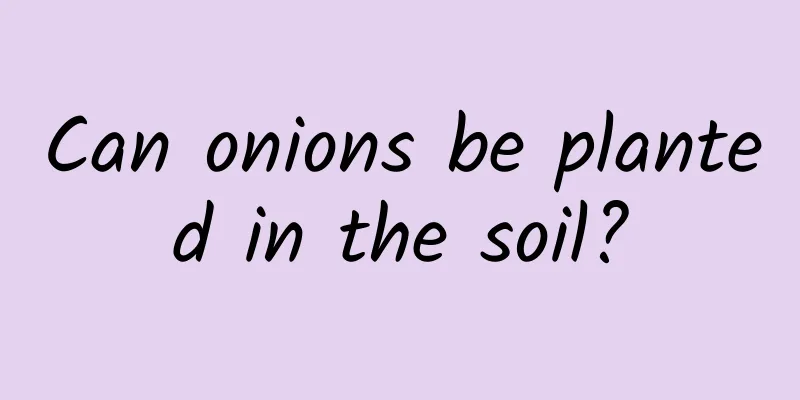Can onions be planted in the soil?

Can onions be planted in the soil?Onions can be planted in the soil. If you want to grow onions, you can use bulb planting, which is the seed collection method used in most parts of China. After the onions are planted, they are sown in September-October of the first year, and the seedlings can be planted in the field or stored in winter to survive the winter. Onions mainly prefer flat and relatively fertile land. Onions grown on such land are not only plump, but also taste very good and the yield will also increase. Secondly, avoid using highly alkaline or highly acidic soil to grow onions, as this will cause poor growth of onions. Onion soil cultivation method1. Land preparation Choose sandy loam plots with fertile soil, deep soil layer and convenient irrigation and drainage for seedling cultivation. Before planting, the soil needs to be leveled and well-rotted farmyard manure and superphosphate should be applied. 2. Sowing and seedling raising First, soak the onion seeds, then place them in an environment of 25-28℃ to keep them moist and germinate. After watering the seedbed thoroughly, sow them evenly and cover them with fine soil and mulch to help keep them warm and moist for germination. 3. Planting When the onion seedlings grow to 3-4 true leaves, they are transplanted to the field. Before transplanting, sufficient base fertilizer is applied, mainly decomposed organic fertilizer, and then the land is prepared and made into ridges. Onions are generally planted before winter. Because the weather is cold, it is not suitable to flood them after planting. 4. Field management During the growth of onions, watering is required frequently to keep the field moist, which is conducive to the plant's absorption of nutrients. In spring, urea should be applied in combination with watering to re-green the onions, and potassium sulfate should be applied during the bulb expansion period. 5. Pest and disease control The main diseases of onions are downy mildew and gray mold. Downy mildew can be prevented and controlled by spraying with 75% thiophanate-methyl wettable powder, while gray mold can be prevented by spraying with 35% carbendazim wettable powder. 6. Harvest When 2/3 of the onion leaves turn yellow, the plants begin to fall over, and the outer scales of the bulbs become dry, it means that the onions are ripe and should be harvested in time. |
<<: What fertilizer is best for camellia
>>: When should Daya oranges be bagged?
Recommend
How to transplant succulents
1. Preparation 1. Flower pot: First, prepare a ne...
How to propagate Japanese red maple and what to pay attention to
Japanese maple propagation method The propagation...
What are the main varieties of octagonal gold plates?
The main varieties of golden plate Dwarf Aglaonem...
What is the flower of Globe amaranth?
1. Stem The stem of Globe Amaranth is relatively ...
Magnolia pest control
Magnolia Diseases: Anthracnose Symptoms Magnolia ...
The growing environment and temperature conditions of the crape myrtle tree
Crape Myrtle Tree Growth Environment and Conditio...
What is the reason for the leaves of dragon bone to turn yellow and fall off?
1. Solution to yellow leaves 1. Reduce watering: ...
Cultivation methods and precautions of succulent money tree
The succulent money tree is not particularly easy...
All varieties of Molan
Golden Mouth Black Orchid There are 3-5 leaves, g...
When do ranunculus bloom?
1. Flowering period The flowering period of Ranun...
When is the right time to sow edamame?
Edamame, also known as green beans and edible soy...
Factors Affecting the Flowering of Iris
Physiological factors of iris flowering Iris has ...
1 pot of Chlorophytum comosum can turn an old house into a mansion and save 100,000 yuan in renovation costs!
If you arrange your green radish like this, one p...
Money tree, Sansevieria...can it be saved if its roots are all rotten? It's amazing
Tiger Piranha Why does my Sansevieria always have...
Can thorny rose be hydroponically cultivated? Hydroponics cultivation method
Can thorny rose be hydroponically cultivated? The...









